Communist Prague: 4 places to learn about it
If you’re interested in the history of Prague and Czechoslovakia in the Communist era, a number of walking tours are on offer, as well as a few museums. I visited the three* main sites that have to do with the Communist era in Prague: besides the more mainstream visit to the Museum of Communism, I’ve toured a nuclear bunker and had a machine gun pointed at me at a so-called KGB Museum.
*Note added in November 2022: Make that four main sites! I recently returned to Prague and added one more site to this article: another nuclear bunker in Prague.
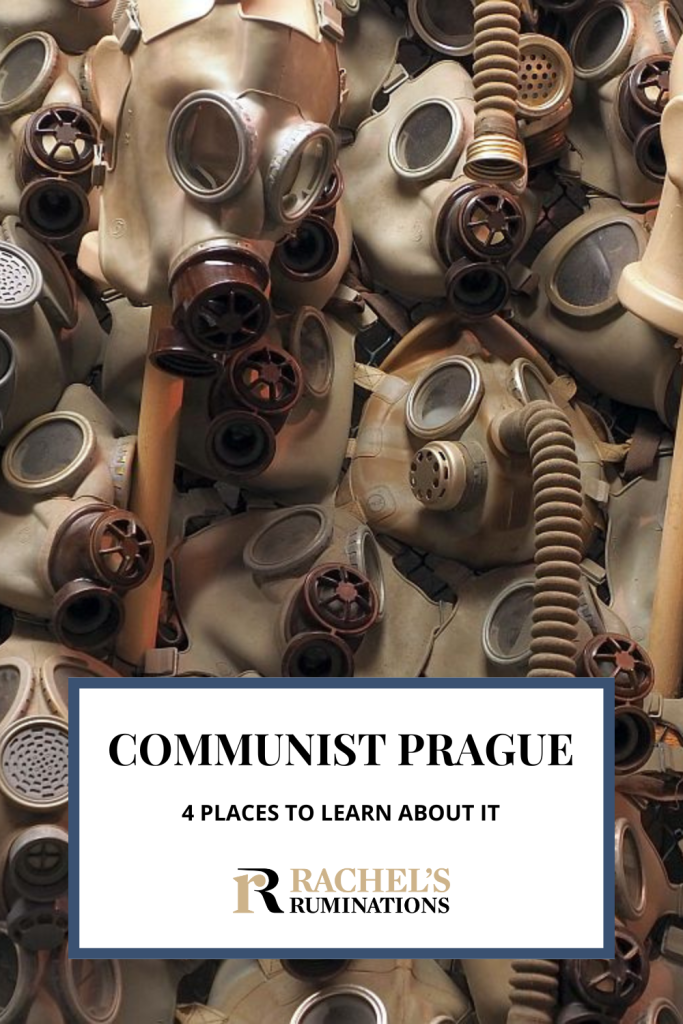
Disclosure: This article contains affiliate links. If you click on one of them and make a purchase, I will get a small percentage of what you spend.
Here are four ways to learn about the history of Prague – and Czechoslovakia as a whole – during the Cold War era.
The history of communism in Prague
But first, the history: it all started before World War II began. In an effort to appease Hitler’s ambitions, the Allies agreed in the 1938 Munich Agreement to give him the Sudetenland, the German-speaking section of Czechoslovakia. Soon after, the Germans invaded most of the rest of Czechoslovakia. The Nazis’ plan was to eliminate the educated classes and the Jews and then “Germanize” the rest.
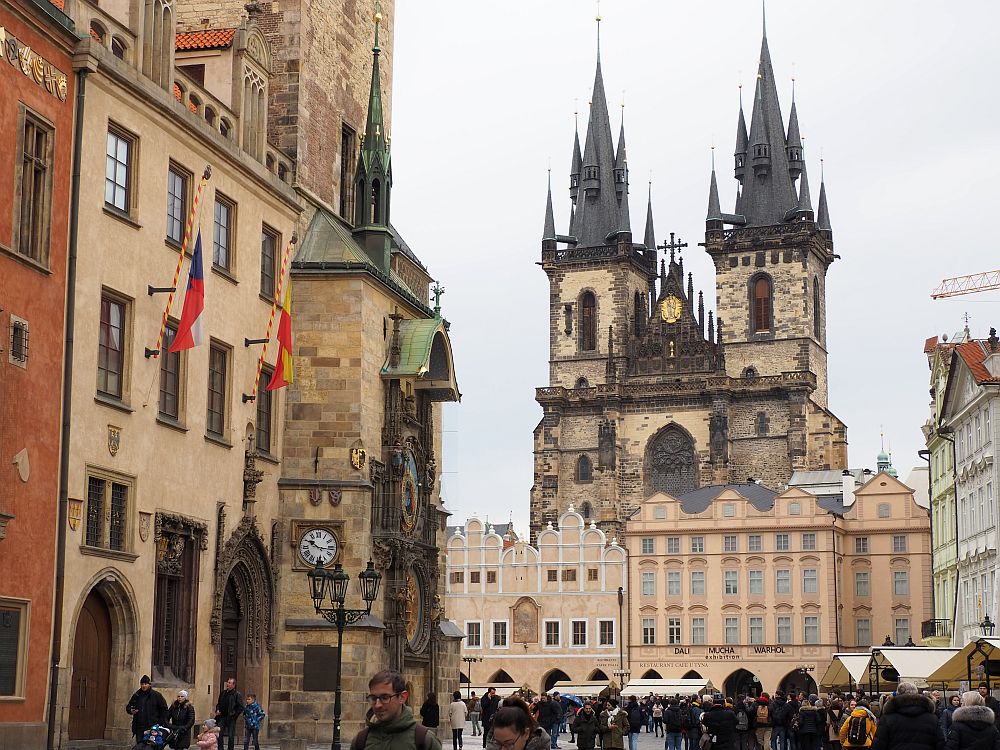
Czechoslovakia under communist rule
After the war, despite the fact that the Allies got there first, the Soviet Army took over control of Czechoslovakia. In the first open election in 1946, because of the Czechs’ feeling that the West had betrayed them twice (first with the Munich Agreement and then after the war, allowing the Soviets to take over), the Czechoslovak Communist Party won. Or they could have won because of a policy of intimidation; it depends on who you believe. It was the last relatively free election in four decades.
Here are some other articles about Prague and Czechia that you might enjoy if you’re planning a trip:
Prague Spring
Czechoslovakia’s 40+ years under Communist dictatorship were a time of shortages, nationalization of businesses, land collectivization, an emphasis on heavy industry, political oppression and general decay. The only moment of light was in 1968, when Alexander Dubček became First Secretary of the Czechoslovak Communist Party. He allowed a certain level of freedom of expression, and citizens grabbed the opportunity with both hands. This “Prague Spring” only lasted from January to August that year, when it was brutally quashed by a military invasion by the Warsaw Pact armies.
If you’d rather get an overview of the history in the form of a walking tour, try this three-hour walking tour that shows where many of the important events took place in Prague, and includes admission to the Museum of Communism.
The Velvet Revolution
Communism in Czechoslovakia fell in 1989, when a succession of Warsaw Pact countries restored democracy. In the “Velvet Revolution,” it took only 10 days for a student demonstration to spread across all of the population and bring down the government.
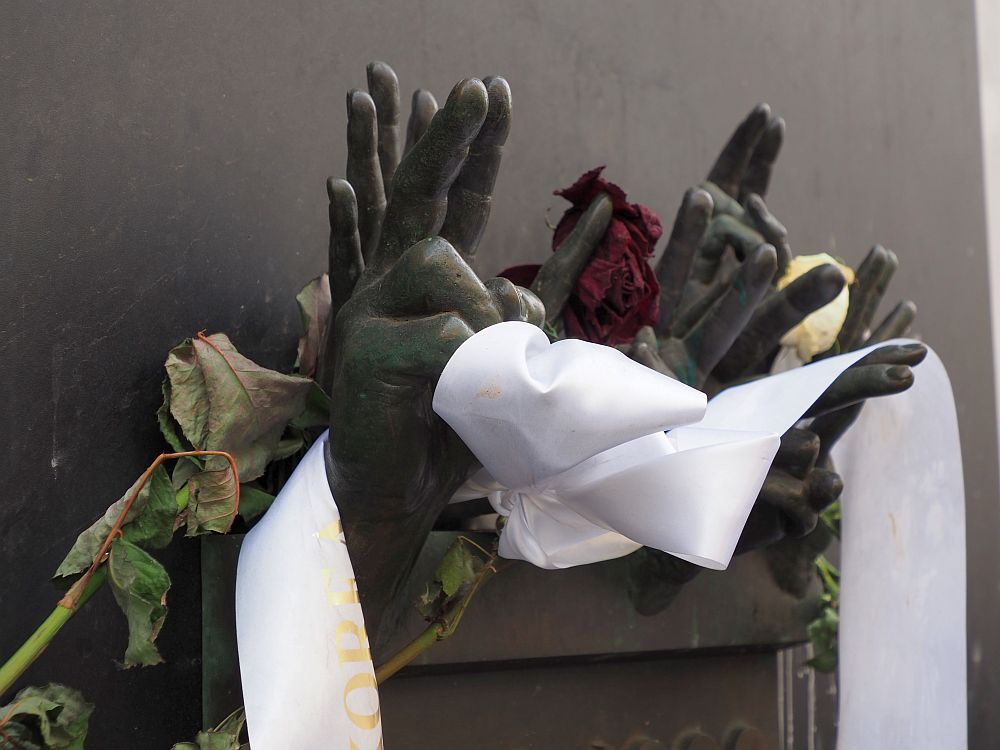
Another remarkable point in their history was the fully peaceful separation of Czechoslovakia in 1992 into the Czech Republic and the Slovak Republic.
1. The Museum of Communism
I’m going to order this article from most mainstream to least. You’ll see what I mean later on.
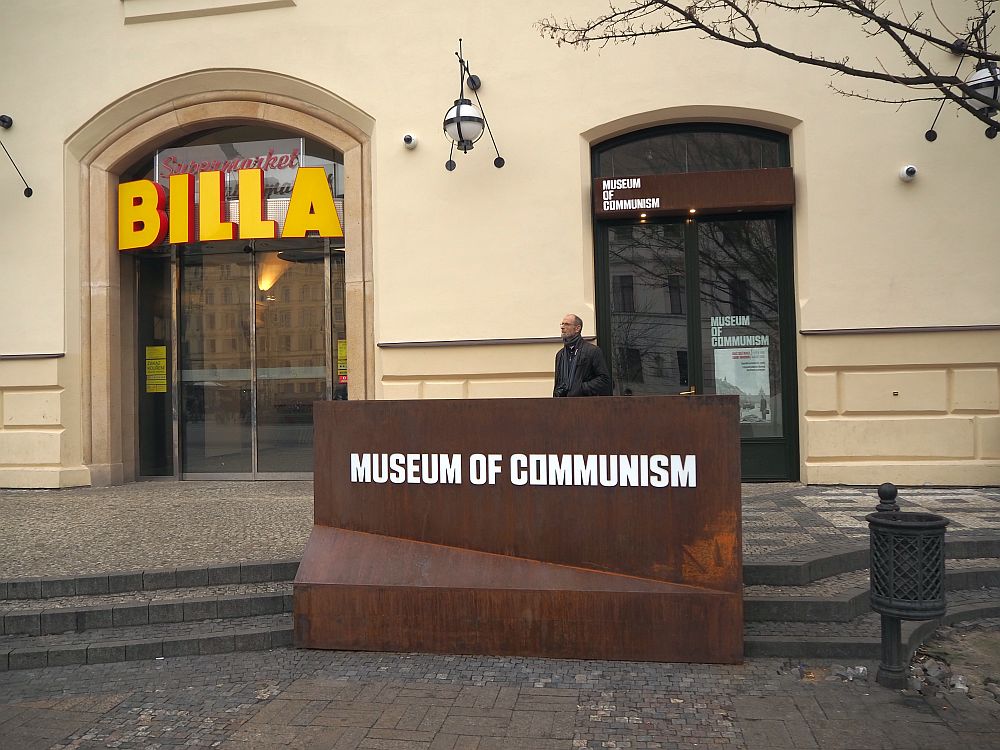
The Museum of Communism is the place to get the overview of Czechoslovakia’s Communist-era history. In a series of rooms, the museum takes visitors through the history in detail, covering every aspect of life in Communist Prague and the country as a whole. Besides all sorts of detail about the politics, one section looks at the Stalinist development of heavy industry, another looks at the economy and the devaluation of the currency, another looks at the limited possibilities under Communist rule for vacation and leisure activities, and so on.
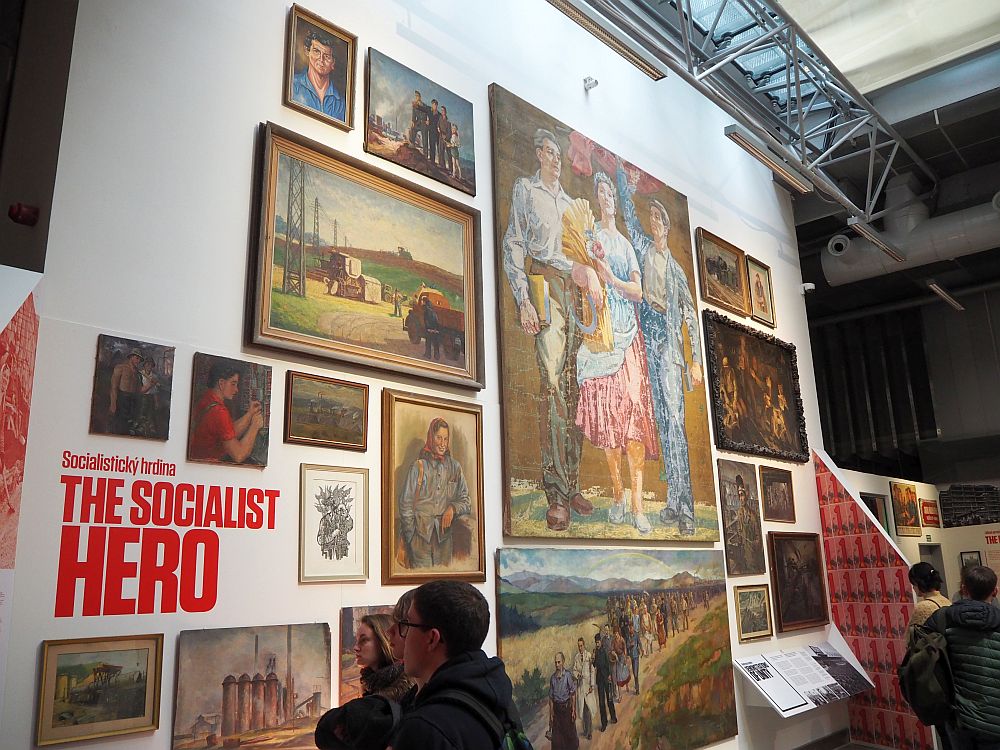
At several points mock-ups show how things were under the Communist regime: a sparsely-supplied shop, for example; a border post; and a secret police office.
A separate room goes into depth about the Prague Spring, of course, and another looks at the Velvet Revolution and the collapse of Communism in Czechoslovakia.

The museum is rather text-heavy, all in both Czech and English. I didn’t feel like I needed to read it all to follow the story, but text certainly dominates. Most sections showed photos or other artifacts to illustrate the text, and some showed videos as well. The visuals about the Prague Spring and the Velvet Revolution are particularly moving.
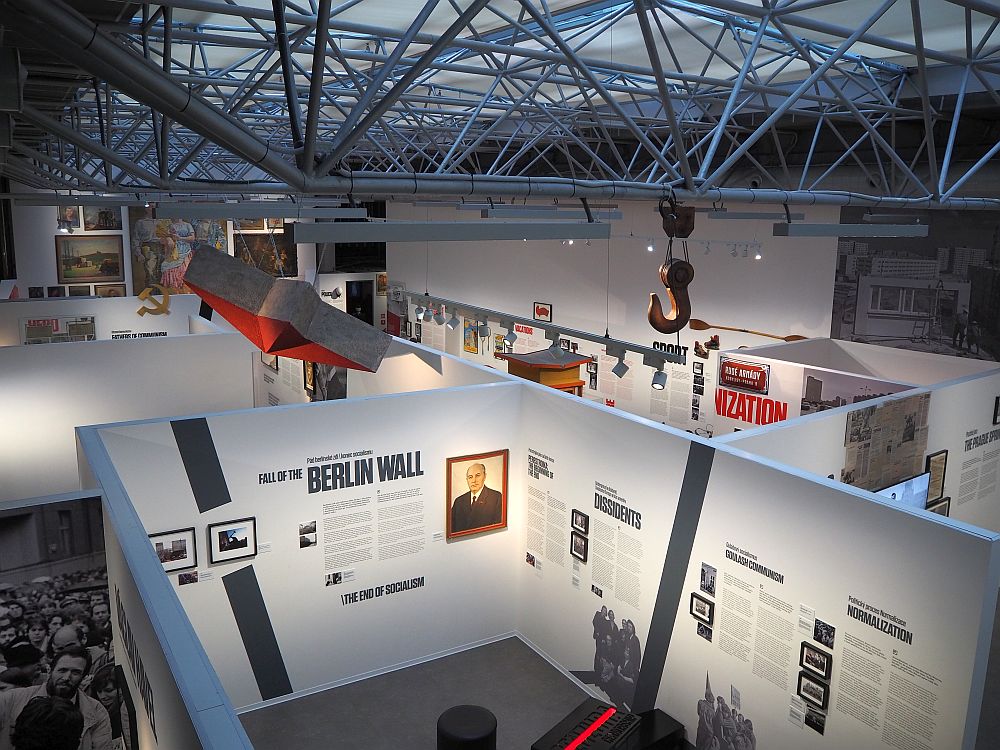
Click here to pre-order your tickets to the Museum of Communism.
Museum of Communism: V Celnici 1031/4, entrance on náměstí Republiky (Republic Square) next to Billa supermarket. Open daily 9:00-20:00.
2. Prague Communism and Nuclear Bunker Tour
While I knew the outlines of the story already from visiting the Museum of Communism, I signed up for the Prague Communism and Nuclear Bunker Tour because I wanted to see the nuclear bunker; I had already seen one in Brno, Czech Republic, and found it very interesting. As far as I could figure out, the only way to see it is to take a tour.
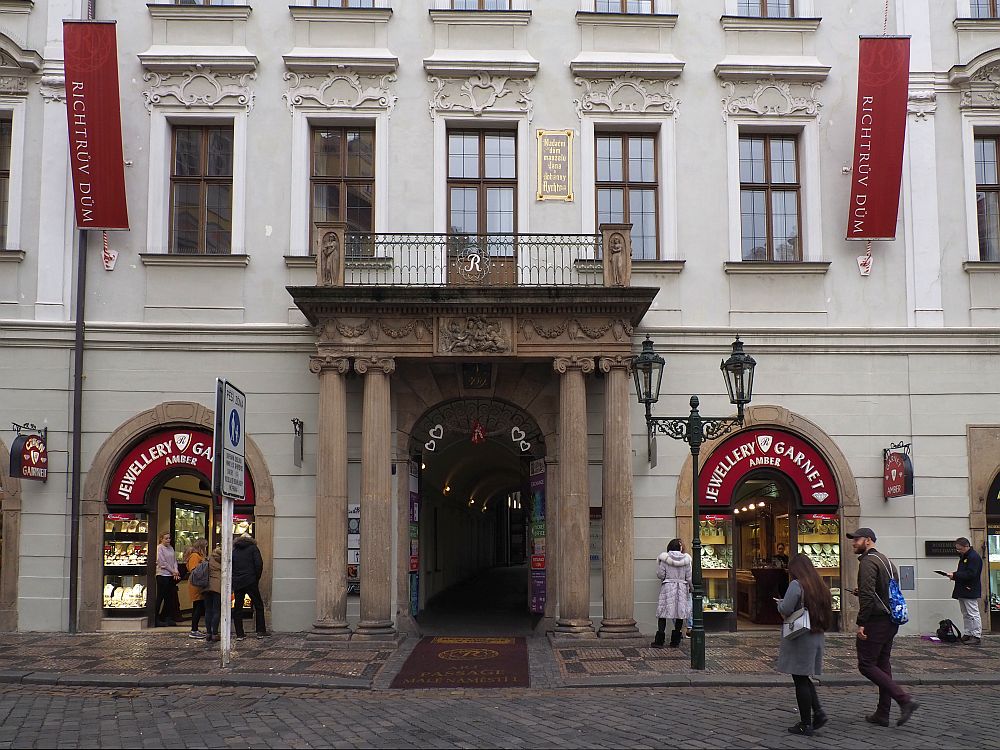
Leaving from the tour’s office right off the old town square, we walked across the center of the old city, stopping now and then for our guide, Catarina, to tell each part of the story. She stopped at a few locations to point out where, for example, the demonstrations of the Velvet Revolution took place and where a small memorial marks that event. We saw a building once used by the secret police, still being used as a police station. Generally, though, the first part of the tour was just a well-told explanation of the history of Prague under communist rule, with added stories about life for regular citizens in communist Prague.
Here are some other articles related to the Cold War period in Eastern Europe:
- WWII and Cold War sites in Berlin
- A Krakow tour with a twist
- The Communist Consumers Museum (in Timişoara, Romania)
Next we boarded a tram to go out of the center to an area called Prague 3. The contrast was pretty astonishing. Here you could see the products of Stalinist thought: lots of big ugly concrete buildings.
In the distance, Catarina pointed out, was Žižkov television tower, which, she told us, was once voted the second ugliest building in the world. I didn’t find it so ugly; it’s got a sort of retro charm to it: a 1980s vision of the future. (She was the second person in Prague to tell me that; it seems a point of pride to have the second ugliest building in the world. I wonder what is the first ugliest.) Today you can visit an observatory in the tower 93 meters up to see the view, and there’s a restaurant and bar as well.
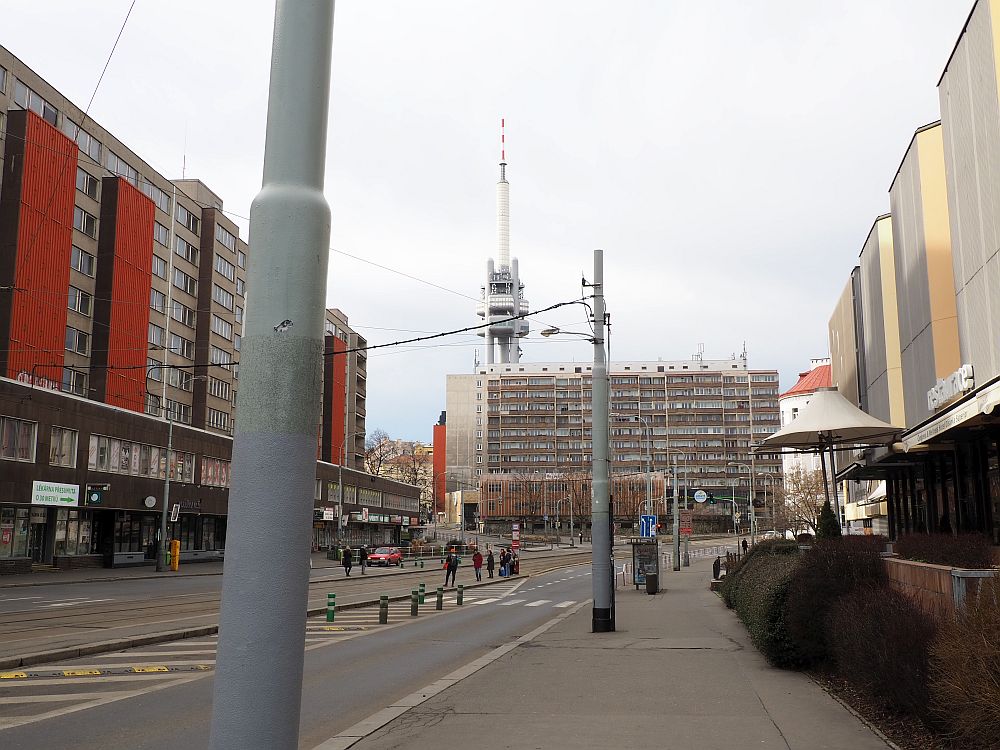
Catarina also pointed out a large white building on a hill in the distance. Built before the war as a war memorial and an institute of military history, the Nazis used it for storage. After the war, the plan was to use it to mark the resistance to Nazism. Instead, the Czechoslovakian Communist Party decided to make it a mausoleum for Klement Gottwald, the party’s leader from 1929-53, as well as other party dignitaries. The idea was to create an equivalent to Lenin’s tomb in Moscow for Gottwald’s body, but attempts to preserve it failed, and it decayed gradually until, eventually, it had to be cremated.

The building was recently renovated and now serves as an army museum.
Žižkov Army Museum: U Památníku 2. Go to metro station Florenc, then take bus 133, 175 or 207 to the U Pamatniku stop. Open Tuesday-Sunday 10:00-18:00.
The nuclear bunker
A short walk led us to a graffiti-covered wall in the side of a tree-covered hill. Catarina pulled out a key and opened a door I wouldn’t even have noticed. Inside, she needed the help of one of the other visitors to get the inner door open; she informed us that it weighs 400 kilos and is solid steel.
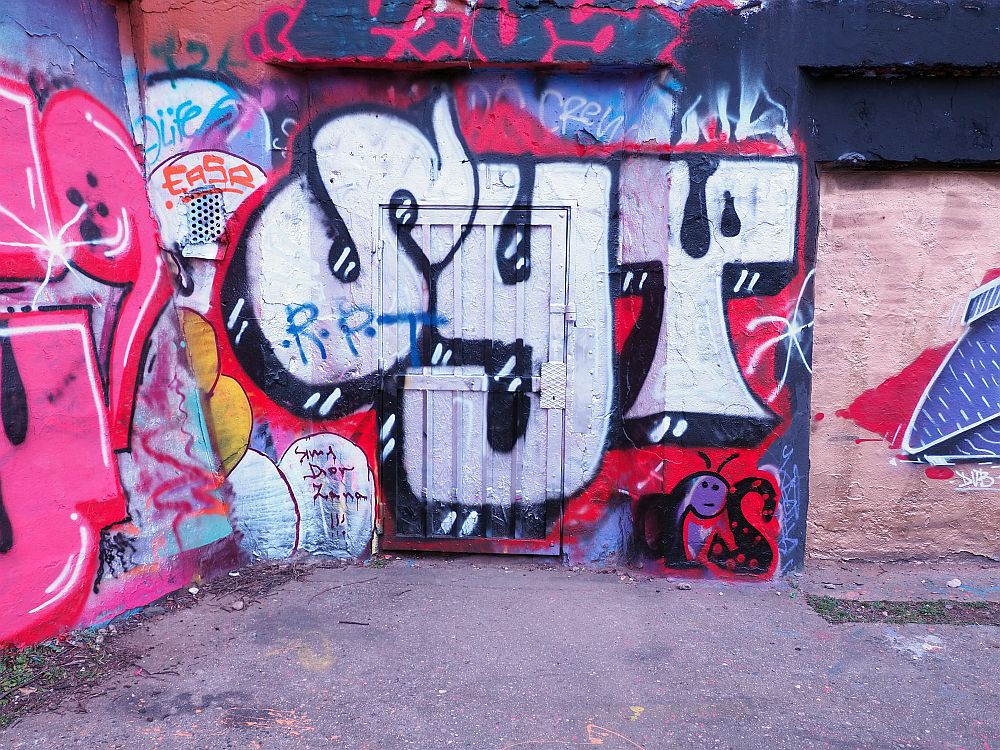
Climbing down a four-story spiral staircase in dim light, I struggled a bit to see where I was stepping. My feelings of being off-balance were accentuated when a recording started playing of an air raid siren.
The shelter is made up of a series of tunnels 16 meters deep. We only saw about a fifth of the tunnels, which serve as a museum. An array of gas masks, suits and other devices stand along the tunnel’s sides, all intended to protect citizens from a nuclear attack.

Catarina explained that this shelter was meant to keep 5000 people safe for two weeks. They had to bring their own suitcases with their own supply of food, but the shelter was equipped with air filtration equipment and water. Whether it would have actually kept them safe is another question, and there doesn’t seem to have been any thought to what would happen after the two weeks.
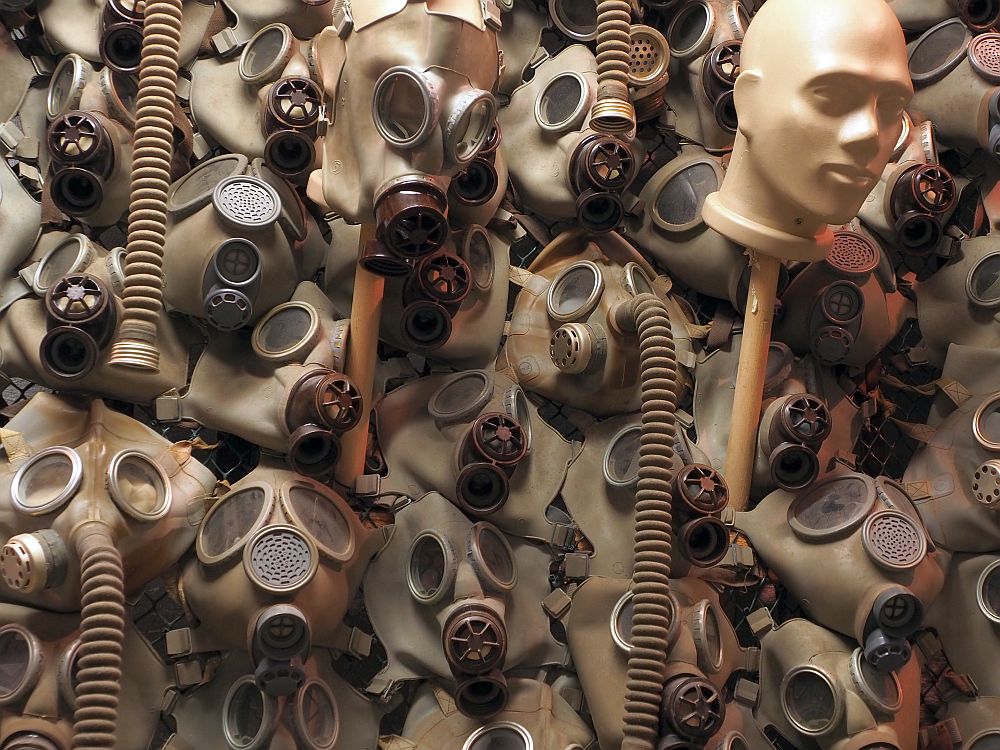
According to Catarina, there were many more such bomb shelters all over the city, supposedly enough to protect about a million people. The metro system was expected to take many of them and had been fitted with similar supplies. It was all a grim reminder of that fearful time.
This is the link to book the tour that I took: the Prague Communism and Nuclear Bunker Tour. I would add, though, that it was closer to three hours than two.
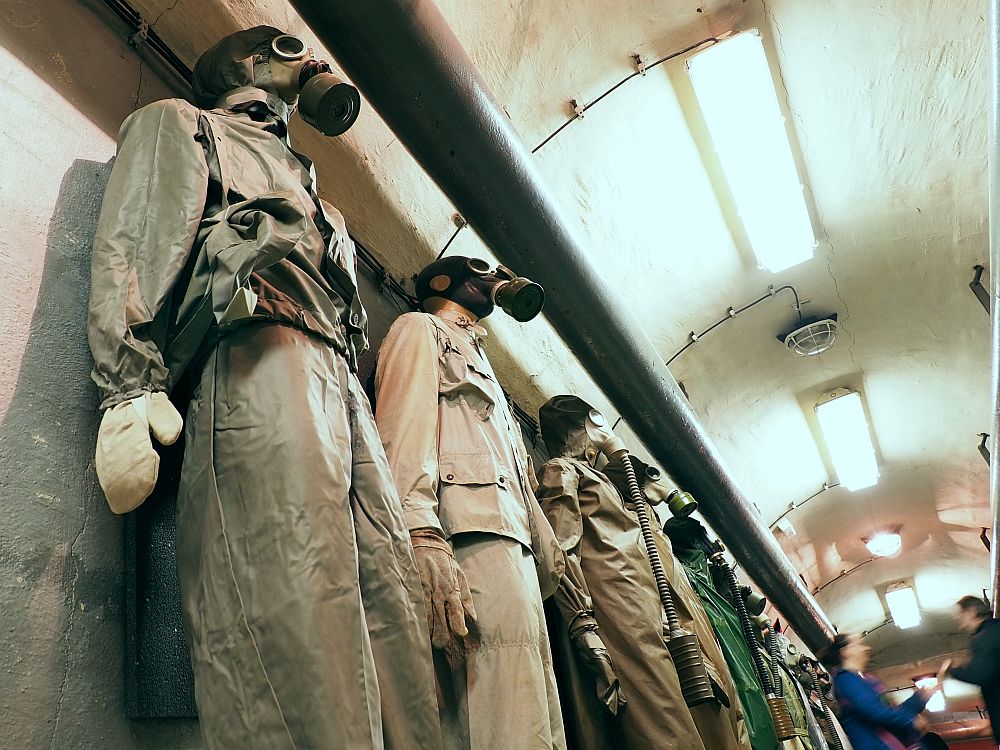
The Prague Communism and Nuclear Bunker Tour: Starting point is the Prague Special Tours ticket office on Male Namesti 459/11, inside an alley on the west side of the Old Town Square, quite near the famous astronomical clock. The tiny ticket office is on the left side halfway down the alley. English tours are offered daily at 10:30 and 14:30.
If you’re planning a trip to Prague, book your accommodations here.
3. Another bunker tour
(Added in 2022) Underneath the Hotel Jalta is the only other remaining nuclear bunker that is open to the public. This one was kept secret, even during the Cold War, because it was meant for the leadership to shelter in in the event of a nuclear attack. Theoretically it could protect 150 people for two weeks. Again, there doesn’t seem to have been much of a plan for after that two weeks was over. The hotel was, it is said, built for the purpose of hiding the shelter.
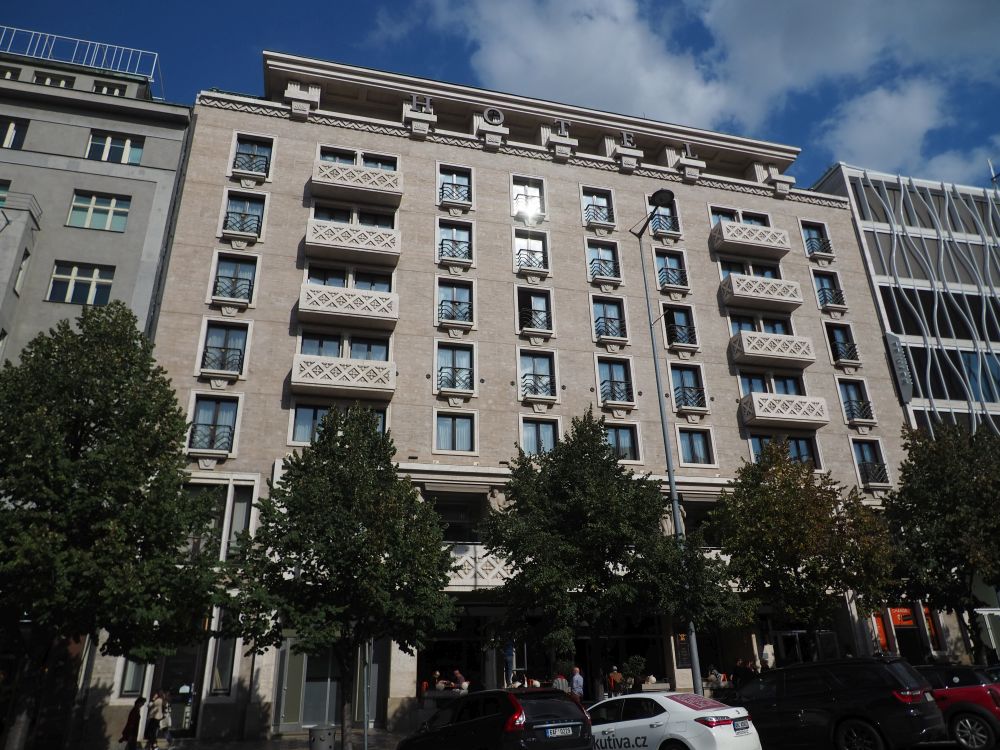
At the same time, this bunker was used as office space for the Communist government’s security apparatus. The hotel above was the best in town during the Communist era, so it’s where visiting dignitaries stayed. That made it a convenient place for spying, and many of the hotel rooms were bugged, with operators in the bunker listening in.
The tour was interesting and a bit claustrophobic: all the rooms that are open to the public are quite small for a tour group to fit into (They allow a maximum of seven adults per tour). The rooms are furnished as they were used by the government during the Cold War – all the mundane desks and communication devices and charts and such of any bureaucracy, with some gas masks thrown into the mix. One room is a doctor’s office, and probably the most interesting artifact, to me, was the large chart of the hotel’s rooms, coded in terms of how thoroughly bugged they were. Apparently the reservationists assigned rooms based on how important the guest was to the security apparatus downstairs.
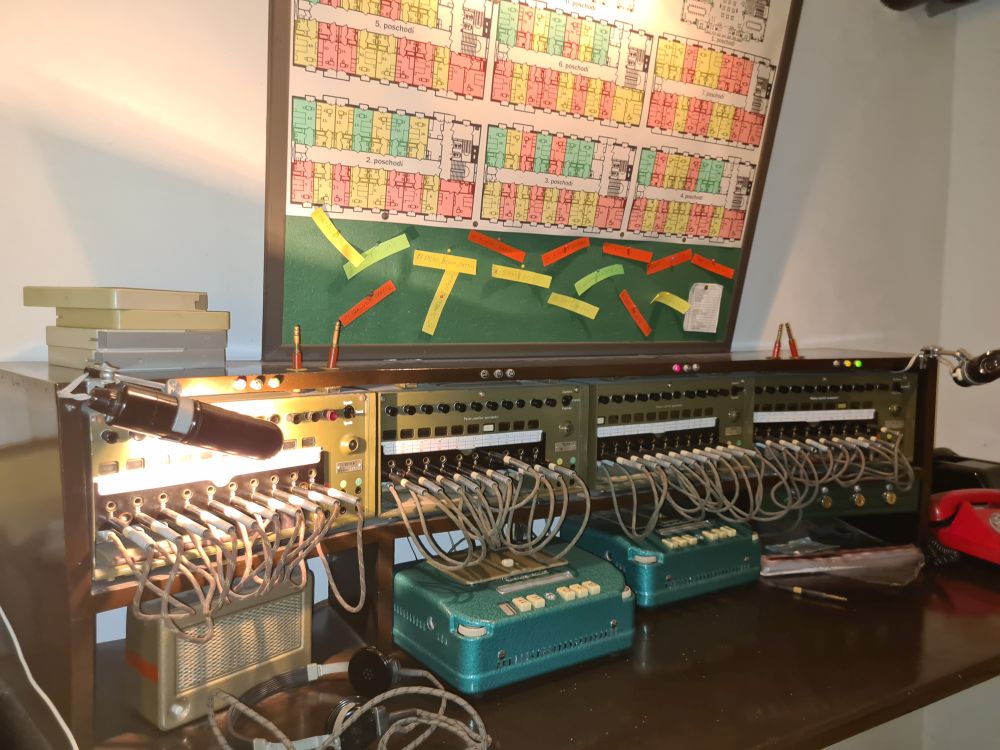
A young man in full Communist-era uniform led the tour; the bunker can only be seen on a tour. He recited the information by rote, but also was happy to take questions and discuss the Cold War period with us. He was patient with people posing for selfies in gas masks or handling communication equipment.
To see this bunker, you have to book ahead online. Tours are offered in English and Czech. The people at the hotel’s reception do not run the tours; the tours and the bunker are operated by the “Czechoslovak Armed Forces Association.”
Hotel Jalta Bunker Tour: Václavské náměstí 818/45. Website.
While you’re planning your trip to Prague, consider buying a Go City Pass, which includes admission to many of the frequently-visited Prague sights. It could offer a significant savings on admission fees.
4. The KGB Museum
The KGB Museum in Prague is not “official” like the Museum of Communism. And it’s nothing like the Stasi Museum in Berlin or the KGB Museum in Riga, both of which are what I would label as proper museums.
As far as I can tell, this is one of those museums where a person has collected lots of stuff and decides to start exhibiting it to the public. Housed in a few rooms behind a simple storefront, this place is a rather disturbing experience to visit.
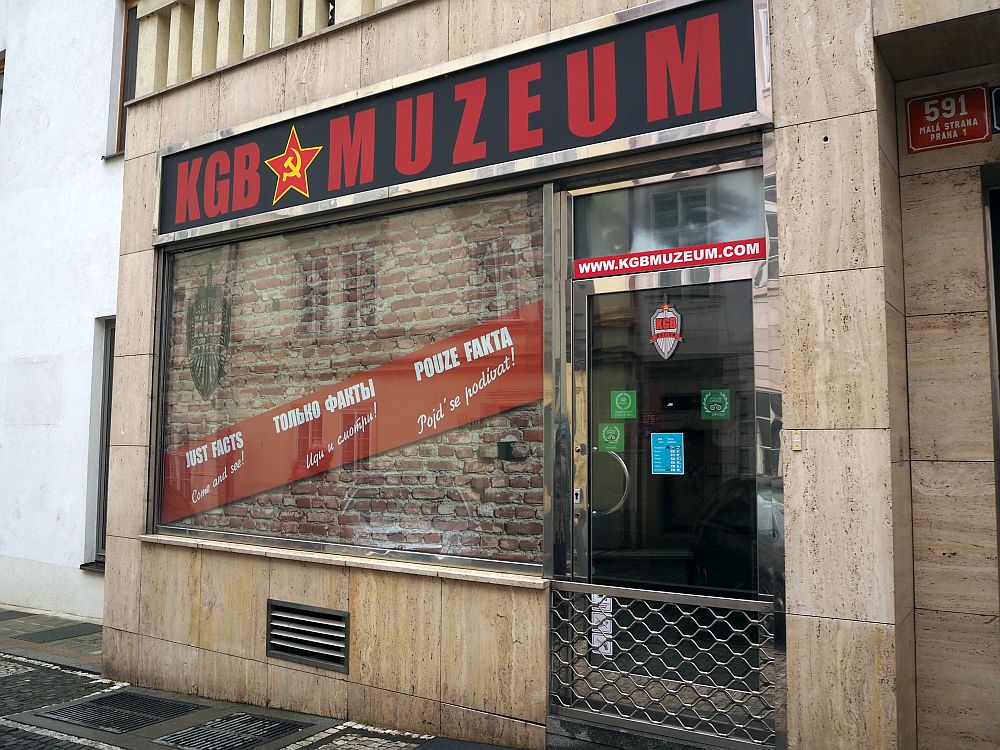
The collector in question is also the tour leader – or at least he was when I visited. He’s oddly over-enthusiastic about all things KGB. Speaking extremely quickly in a very thick Russian accent, he told us about many of the objects filling the room, arranged on shelves or in glass cases. But he didn’t just tell us; he showed us as well, seeming a bit too eager to use the weapons – rifles and machine guns, mostly, and also daggers – he was brandishing, and sometimes pointing at us.
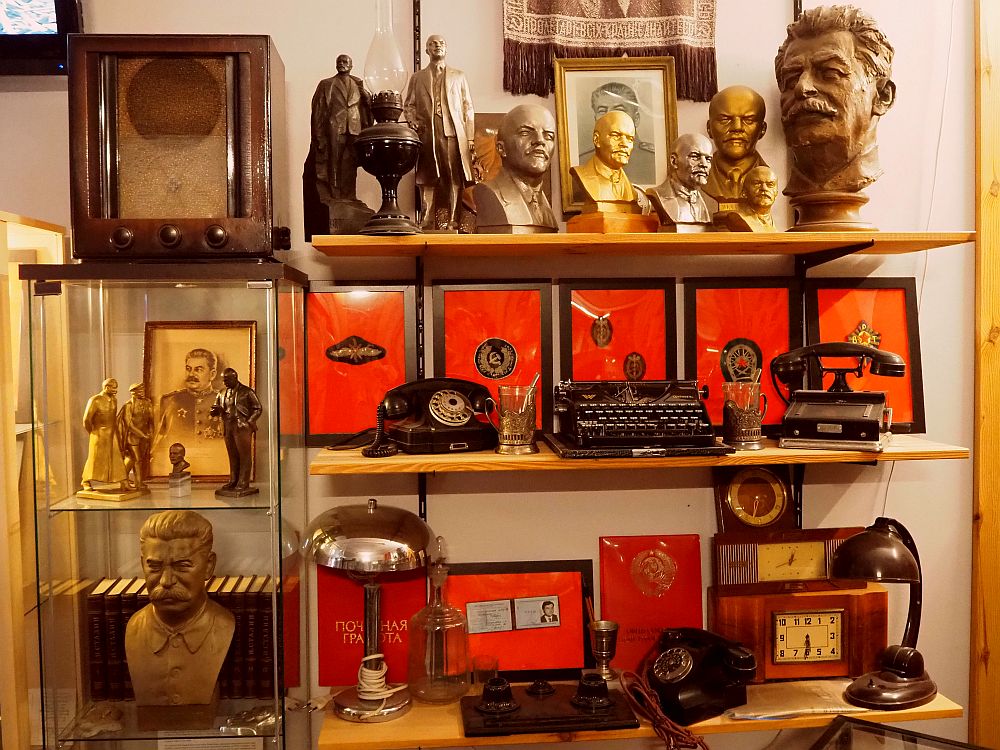
He, for example, demonstrated the use of a serrated garrote to kill someone. Fortunately, in this case he played both parts – the assassin and the victim – dying a dramatic death.
The gathered group of visitors – you are not allowed to walk around the rooms without the “tour” – did a lot of widening their eyes at each other at the sheer craziness of this guy and his spy toys. His generally extreme behavior meant that we didn’t feel we could particularly trust his explanations of the history or the use of the items we saw. The museum seemed to be mostly about the KGB, which operated in the Soviet Union, not in Czechoslovakia, where the secret police was called Státní bezpečnost, or StB. Some items, though, did seem connected to Czech history.
Nevertheless, he had some unusual items on display: tiny cameras, for example, devices for eavesdropping, medals and commemorative plates, propaganda posters, and lots and lots of weaponry: mostly daggers and guns. We also got to hold a gun and try on a Russian soldier’s cap. Yet I never got a sufficient explanation of why the collection also included various Nazi-related paraphernalia. As I said, the whole thing was a bit disturbing.
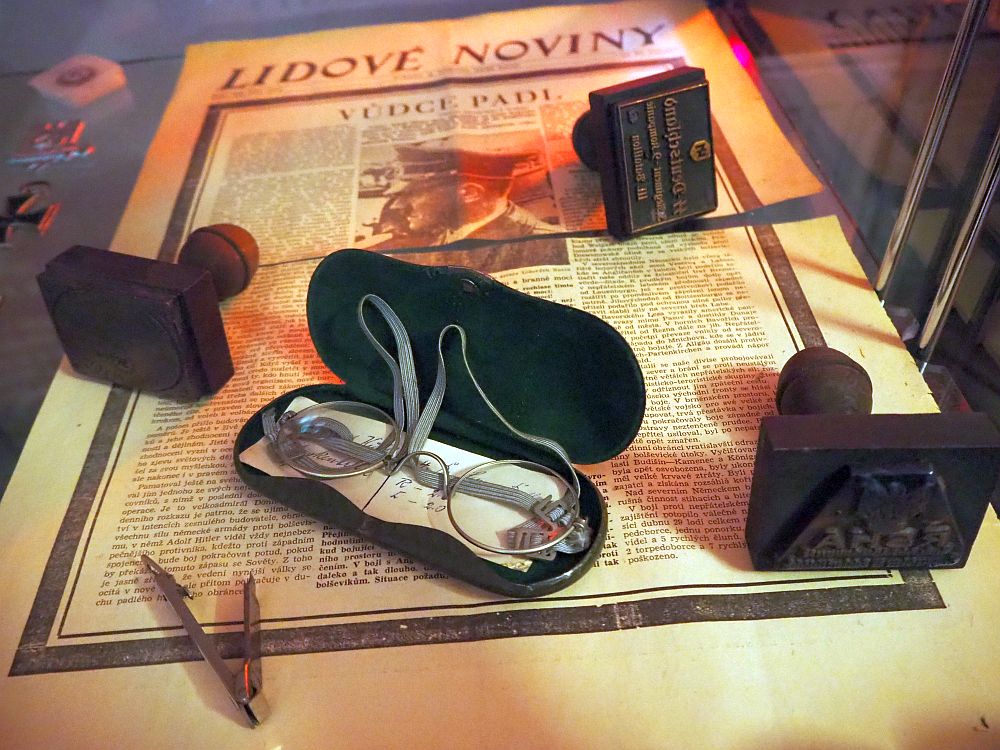
The KGB Museum: Vlašska 13. Open daily 10:00-17:00, but you might have to wait, because tours will not run without at least three people. Even during opening hours you might have to wait outside if the guide is busy running a tour at that moment. During our tour he kept running out the front door whenever someone tried to enter, stopping them and telling them to wait.
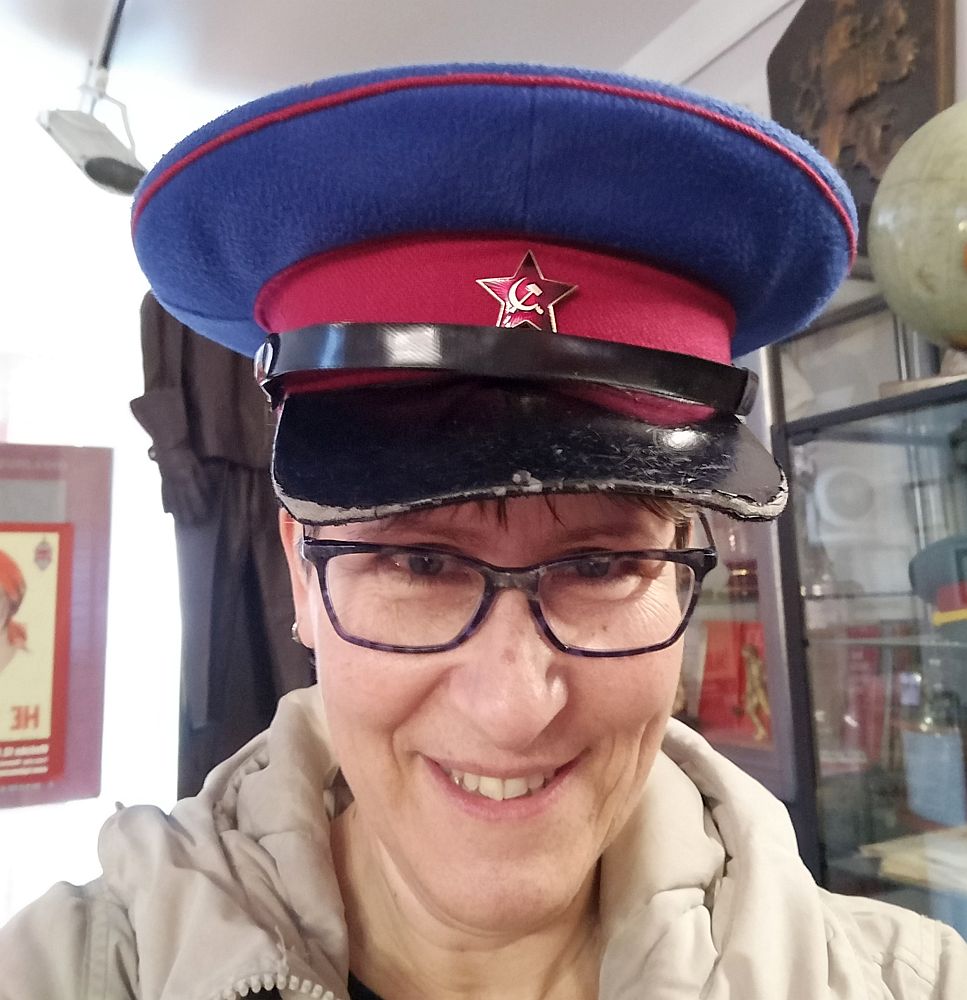
Which experience is best?
Of the four, I’d say the first nuclear bunker tour above is the best choice. It’ll give you the overview of the history, presented in an interesting, personal way – Catarina linked events to her own and her family’s experiences – and a sense of the fear surrounding the nuclear threat in the Cold War period.
If you would prefer more detail, the Museum of Communism is the way to go. You can take your time and read the parts that are most interesting to you.
The Hotel Jalta nuclear bunker is also interesting, but there’s no need to visit two bunkers. The other is more extensive.
I wouldn’t particularly recommend the KGB Museum. Both nuclear bunker tours have plenty of artifacts from the period, as does the Museum of Communism. Not only that, all of them focus much better on Prague under communism and Czechoslovakia as a whole, while the KGB Museum is more about the Soviet Union. The only real reason to visit the KGB Museum would be to see this particular over-the-top collector in person, if he’s still there. He’s good for a chuckle, but I wouldn’t trust much of what he says or expect to learn much.
Here are the links again to book the Museum of Communism and the Prague Communism and Nuclear Bunker Tour.
Have you seen any of these places in Prague? What did you think? Leave a comment below!
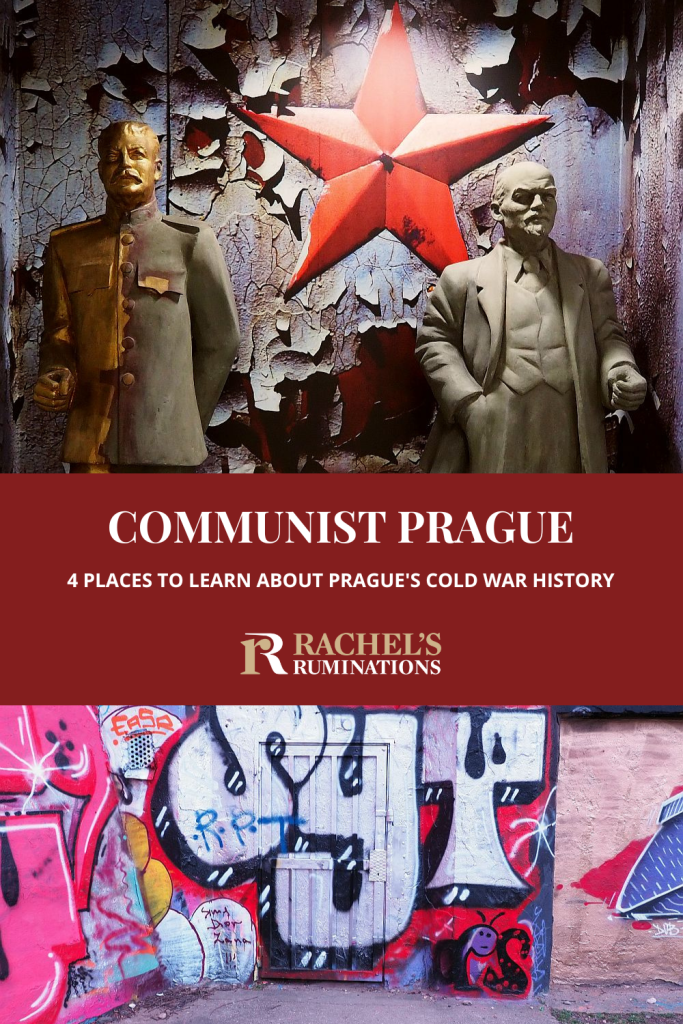
My travel recommendations
Planning travel
- Skyscanner is where I always start my flight searches.
- Booking.com is the company I use most for finding accommodations. If you prefer, Expedia offers more or less the same.
- Discover Cars offers an easy way to compare prices from all of the major car-rental companies in one place.
- Use Viator or GetYourGuide to find walking tours, day tours, airport pickups, city cards, tickets and whatever else you need at your destination.
- Bookmundi is great when you’re looking for a longer tour of a few days to a few weeks, private or with a group, pretty much anywhere in the world. Lots of different tour companies list their tours here, so you can comparison shop.
- GetTransfer is the place to book your airport-to-hotel transfers (and vice-versa). It’s so reassuring to have this all set up and paid for ahead of time, rather than having to make decisions after a long, tiring flight!
- Buy a GoCity Pass when you’re planning to do a lot of sightseeing on a city trip. It can save you a lot on admissions to museums and other attractions in big cities like New York and Amsterdam.
- Ferryhopper is a convenient way to book ferries ahead of time. They cover ferry bookings in 33 different countries at last count.
Other travel-related items
- It’s really awkward to have to rely on WIFI when you travel overseas. I’ve tried several e-sim cards, and GigSky’s e-sim was the one that was easiest to activate and use. You buy it through their app and activate it when you need it. Use the code RACHEL10 to get a 10% discount!
- Another option I just recently tried for the first time is a portable wifi modem by WifiCandy. It supports up to 8 devices and you just carry it along in your pocket or bag! If you’re traveling with a family or group, it might end up cheaper to use than an e-sim. Use the code RACHELSRUMINATIONS for a 10% discount.
- I’m a fan of SCOTTeVEST’s jackets and vests because when I wear one, I don’t have to carry a handbag. I feel like all my stuff is safer when I travel because it’s in inside pockets close to my body.
- I use ExpressVPN on my phone and laptop when I travel. It keeps me safe from hackers when I use public or hotel wifi.



A couple of years ago we did a walking food tour in Prague. After a few hours with the guide who made the ‘then and now’ comparisons almost everywhere we stopped, we decided to check out the Museum of Communism. Interesting and agree that there’s an awful lot of text with the photos. Comprehensive article, thanks.
Great review and I felt like I was right there with you – especially the way you described the KGB Museum and its quirky curator!
When I visited Prague in the 1990s it was just getting over Communism, but our young guides seemed to regard it all as a bit of a joke. It is interesting to see how it the subject is treated with a bit of historical perspective.
This guide was youngish too, but she had taken part in the student demonstrations in the Velvet Revolution, and she clearly had plenty of stories about what life was like in the worst period.
We were in Prague two years ago and it was the 50th anniversary of the Russian Invasion. They had a wonderful photo exhibit of the Czech resistance in a gallery off the Tourism Office in the city center. It was quite an eye opener and very moving. Wish we had read your post before our visit!
I may be mistaken, but I think a few of them are still there!